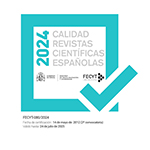Urbanismo Subterráneo. Análisis comparativo de las propuestas de Leonardo Da Vinci y Eugène Henard
Resumen
Eugène Henard publicó sus Études entre 1902 y 1909. En ellos exponía los problemas urbanos que se estaban desarrollando en la ciudad de París a la vez que ofrecía soluciones de aspecto futurista. Es su propuesta titulada calle subterránea, incluida en la conferencia las ciudades del porvenir, la que hizo que la urbanista Choay lo calificara como “teórico del urbanismo subterráneo”. Una propuesta innovadora y única que, sin embargo, presenta múltiples similitudes con la città ideale realizada por el genio del Renacimiento, Leonardo da Vinci cuando se encontraba en Milán entre 1487- 1489. Esta propuesta se encuentra calificada como “un manual para el arquitecto” por los excelentes estudios para la organización de una ciudad de nueva creación que rompía con los sistemas urbanos tradicionales. El artículo realiza una reflexión teórica mediante la comparación entre ambas propuestas que fueron publicadas en distintos ámbitos geográficos y con una diferencia de 422 años. Los resultados arrojan grandes semejanzas y un nexo de unión, la ciudad de París
Descargas
Descarga artículo
Licencia
La revista Anales de Geografía de la Universidad Complutense, para fomentar el intercambio global del conocimiento, facilita el acceso sin restricciones a sus contenidos desde el momento de su publicación en la presente edición electrónica, y por eso es una revista de acceso abierto. Los originales publicados en esta revista son propiedad de la Universidad Complutense de Madrid y es obligatorio citar su procedencia en cualquier reproducción total o parcial. Todos los contenidos se distribuyen bajo una licencia de uso y distribución Creative Commons Reconocimiento 4.0 (CC BY 4.0). Esta circunstancia ha de hacerse constar expresamente de esta forma cuando sea necesario. Puede consultar la versión informativa y el texto legal de la licencia.












